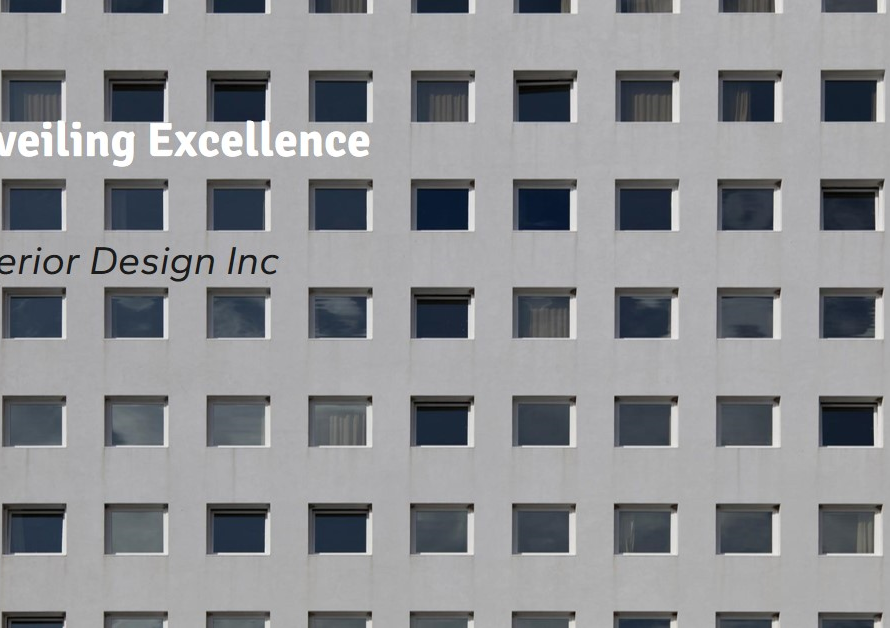
Table of Contents
Defining sustainable architecture design
Sustainable architecture design is a holistic approach to building and designing structures that minimize the negative impact on the environment, while also promoting energy efficiency and resource conservation. It goes beyond using eco-friendly materials and incorporates strategies such as passive heating and cooling, efficient waste management systems, and renewable energy sources. By combining these elements together, sustainable architecture design aims to create buildings that are not only visually appealing but also socially responsible.
One key aspect of sustainable architecture design is adaptability. Buildings designed with adaptability in mind can be easily repurposed or modified as needs change over time. This flexibility reduces waste by ensuring that structures can be used for multiple purposes throughout their lifespan. For example, a building designed for office space may be easily transformed into residential units or commercial spaces without extensive demolition or reconstruction. This adaptive reuse approach prevents unnecessary resource consumption, supports community resilience, and fosters creativity in finding new uses for existing structures.
Another important consideration in sustainable architecture design is the use of natural resources efficiently. This includes incorporating techniques like rainwater harvesting, gray water recycling systems, and green roofs into a building’s design to reduce water consumption while enhancing biodiversity within urban environments. Additionally, utilizing renewable energy sources like solar panels or wind turbines helps reduce reliance on fossil fuels and decreases carbon emissions associated with traditional power grids.
In conclusion, sustainable architecture design seeks to create buildings that strike a balance between aesthetics, functionality, environmental consciousness, and social responsibility. The integration of adaptability features allows buildings to evolve alongside changing needs instead of being
Principles of sustainable architecture design
One of the key principles of sustainable architecture design is minimizing energy consumption. This involves using renewable energy sources such as solar panels and wind turbines to power buildings, as well as implementing energy-efficient systems and materials. By reducing reliance on fossil fuels, sustainable architecture contributes to the mitigation of climate change and helps create a more environmentally-friendly future.
Another important principle is the use of passive design strategies. These strategies take advantage of natural elements such as sunlight, wind, and vegetation to optimize indoor comfort while minimizing energy usage. For example, incorporating large windows on the southern side of a building allows for maximum daylight penetration during winter months, reducing the need for artificial lighting. Additionally, designing buildings with natural ventilation systems can effectively decrease reliance on mechanical cooling methods like air conditioning.
In summary, sustainable architecture design aims to create structures that are both environmentally friendly and socially responsible. By focusing on minimizing energy consumption through renewable sources and passive design strategies, architects play a crucial role in creating a more sustainable future for our planet.
Benefits of sustainable architecture design
Sustainable architecture design offers numerous benefits that go beyond simply reducing a building’s carbon footprint. One major advantage is the potential for significantly lower energy consumption. By incorporating features such as natural ventilation, solar panels, and insulation materials made from recycled products, buildings can use less electricity and rely more on renewable energy sources.
Moreover, sustainable architecture design promotes healthier living environments. Many eco-friendly buildings prioritize natural lighting and indoor air quality, resulting in spaces that are more comfortable and conducive to well-being. Additionally, these designs often incorporate green spaces and biophilic elements that connect occupants with nature. Studies have shown that exposure to nature not only reduces stress levels but also enhances cognitive performance and overall satisfaction.
In addition to the positive impacts on physical health, sustainable architecture design can also have economic benefits. Buildings designed with sustainability principles in mind tend to be more resilient during natural disasters like hurricanes or earthquakes. These structures can withstand extreme weather conditions better than traditional buildings, potentially leading to lower repair costs and insurance premiums over time.
Overall, the benefits of sustainable architecture design extend beyond environmental concerns. The combination of reduced energy consumption, improved indoor comfort and health outcomes, as well as increased resilience against natural disasters make it an appealing choice for both individuals and communities looking towards a brighter future.
Examples of sustainable architecture designs
Sustainable architecture is all about finding creative and innovative ways to design buildings that minimize their impact on the environment. One example of a sustainable architecture design is the use of passive solar techniques. These designs take advantage of natural sunlight and heat to reduce the need for artificial lighting and heating systems, ultimately reducing energy consumption. For instance, architects can incorporate large windows and skylights to maximize daylighting while also integrating shading devices to prevent excessive heat gain during warmer months.
Another fascinating example of sustainable architecture design is the implementation of green roofs. Green roofs involve covering rooftops with living vegetation, creating a layer of insulation that improves energy efficiency by reducing heat losses in winter and cooling needs in summer. Additionally, they act as natural stormwater management systems by absorbing rainwater, preventing runoff and alleviating stress on urban drainage systems. Furthermore, green roofs improve air quality by capturing dust particles and carbon dioxide from the environment while simultaneously releasing oxygen through photosynthesis.
These examples demonstrate just a fraction of the possibilities that exist within sustainable architecture design. By thinking outside the box and incorporating eco-friendly principles into building plans, architects can help create more environmentally conscious spaces that contribute positively to our planet’s well-being without compromising on functionality or aesthetics. Sustainable architecture not only benefits individuals but also plays a vital role in mitigating climate change challenges for present and future generations alike.
Challenges in implementing sustainable architecture design
Implementing sustainable architecture design presents numerous challenges that architects and developers must overcome. One of the main obstacles is the high upfront costs associated with incorporating sustainable features into buildings. From installing solar panels to implementing energy-efficient technologies, these initial investments can deter many individuals or organizations from pursuing sustainable architecture.
Another challenge relates to the availability of suitable materials and resources. While there has been a push towards using renewable materials like bamboo or recycled materials in construction, their accessibility and affordability may pose difficulties for architects looking to incorporate them into their designs on a larger scale. Additionally, finding local suppliers for these materials can be challenging and may increase transportation costs if sourced from further away.
Lastly, navigating building codes and regulations can present obstacles when it comes to implementing sustainable architecture design. As sustainability practices continue to evolve, many building codes are still catching up, which can create roadblocks for architects trying to implement new technologies or innovative designs that may not yet be supported by existing regulations.
Overall, while there are challenges in implementing sustainable architecture design, architects and professionals in the industry should view these hurdles as opportunities for innovation and creative problem-solving. By collaborating with policymakers, investing in research and development, as well as educating clients about the long-term benefits of sustainability initiatives, we can collectively work towards a more environmentally-friendly built environment.
Future trends in sustainable architecture design
Sustainable architecture design is continuously evolving, and there are several exciting future trends that are set to shape the industry. One of these trends is the use of biophilic design principles, which aim to incorporate natural elements into architectural spaces. The idea behind this trend is that by bringing nature into our built environment, we can improve human well-being and connection to the natural world. This can be achieved through strategies such as incorporating green walls and roofs, maximizing natural light and ventilation, and using natural materials like wood.
Another future trend in sustainable architecture design is the integration of smart technology. As technology continues to advance, architects are finding innovative ways to incorporate it into building designs for enhanced energy efficiency. For example, advanced sensors can monitor occupancy levels and adjust lighting and temperature accordingly, reducing energy consumption. Additionally, smart solar panels can track the movement of sunlight throughout the day for optimal energy generation. These technological advancements not only make buildings more sustainable but also enhance occupant comfort and convenience.
In conclusion, future trends in sustainable architecture design hold great promise for creating greener and more efficient buildings. By redefining our approach to architectural spaces through biophilic design principles and embracing smart technologies, we can foster a deeper connection between humans and nature while minimizing our reliance on finite resources. As sustainability becomes an increasingly important aspect of our society’s development, it is important for architects to stay up-to-date with these emerging trends in order to create beautiful designs that positively impact both the environment and human well-being.
Conclusion: Importance of sustainable architecture for the future
In conclusion, the importance of sustainable architecture for the future cannot be overstated. As we face ever-increasing challenges related to climate change and environmental degradation, it is imperative that we adopt practices that prioritize sustainability in design and construction. Sustainable architecture offers us a way to create buildings that minimize their negative impact on the environment while also maximizing their positive contributions.
One of the key reasons why sustainable architecture is important for the future is its potential to reduce carbon emissions. Buildings are major contributors to greenhouse gas emissions through energy consumption and construction materials. By incorporating energy-efficient designs, using renewable energy sources, and employing eco-friendly building materials, sustainable architecture can significantly decrease these emissions.
Furthermore, sustainable architecture promotes resource conservation and preservation. It encourages designers and architects to work with nature rather than against it, finding ways to coexist harmoniously with the surrounding ecosystems. By designing buildings that rely on natural lighting and ventilation systems or harvest rainwater for reuse purposes, we minimize our reliance on finite resources such as fossil fuels or municipal water supplies.
Ultimately, adopting sustainable architectural practices is not only an ethical choice but also a practical one. As our world becomes increasingly strained by population growth and resource scarcity, embracing sustainability in design becomes essential for maintaining a livable planet for future generations. The time has come for us to think beyond short-term gains and embrace long-term solutions that consider both human needs and ecological balance – sustainably designed buildings hold the key to achieving this vision of a better future.



